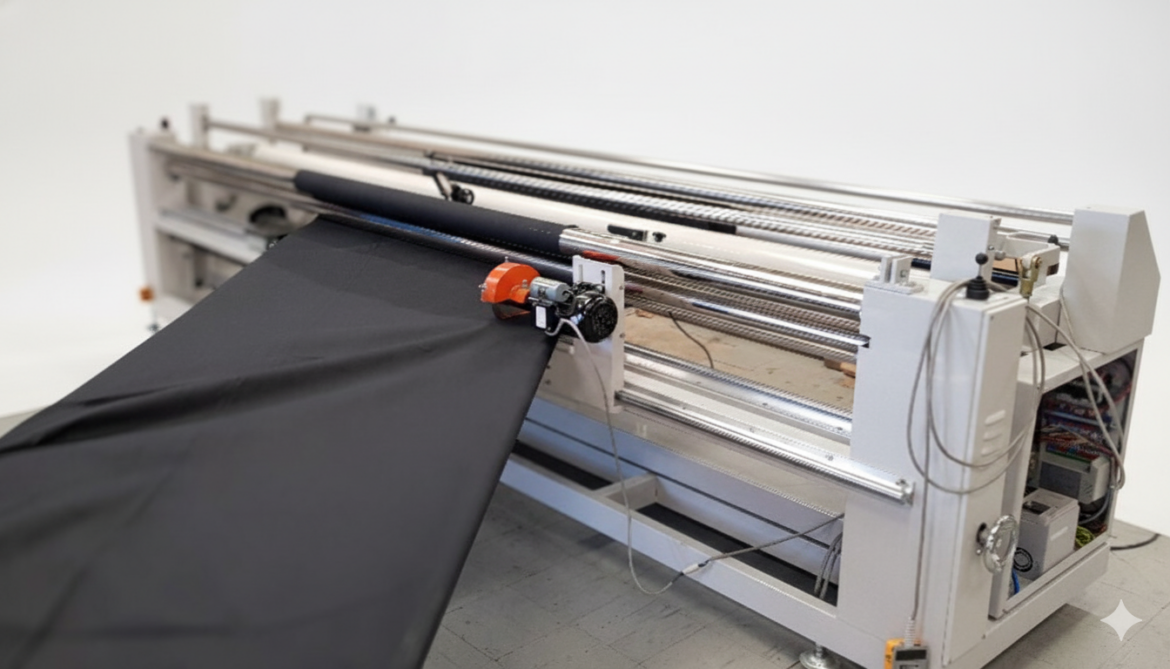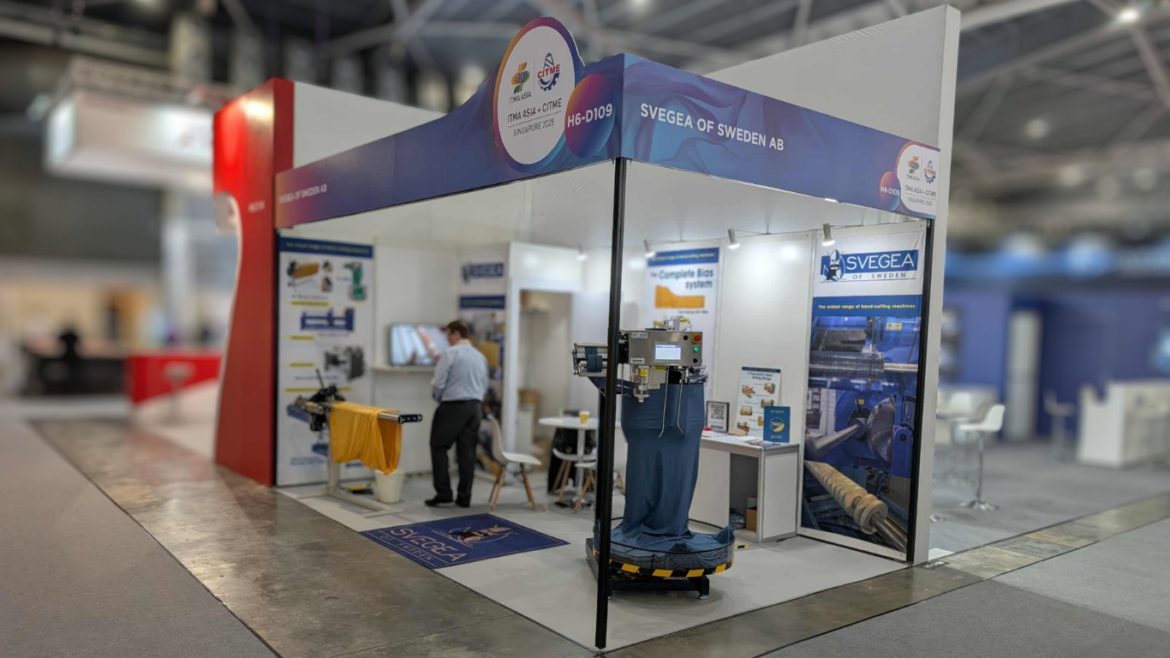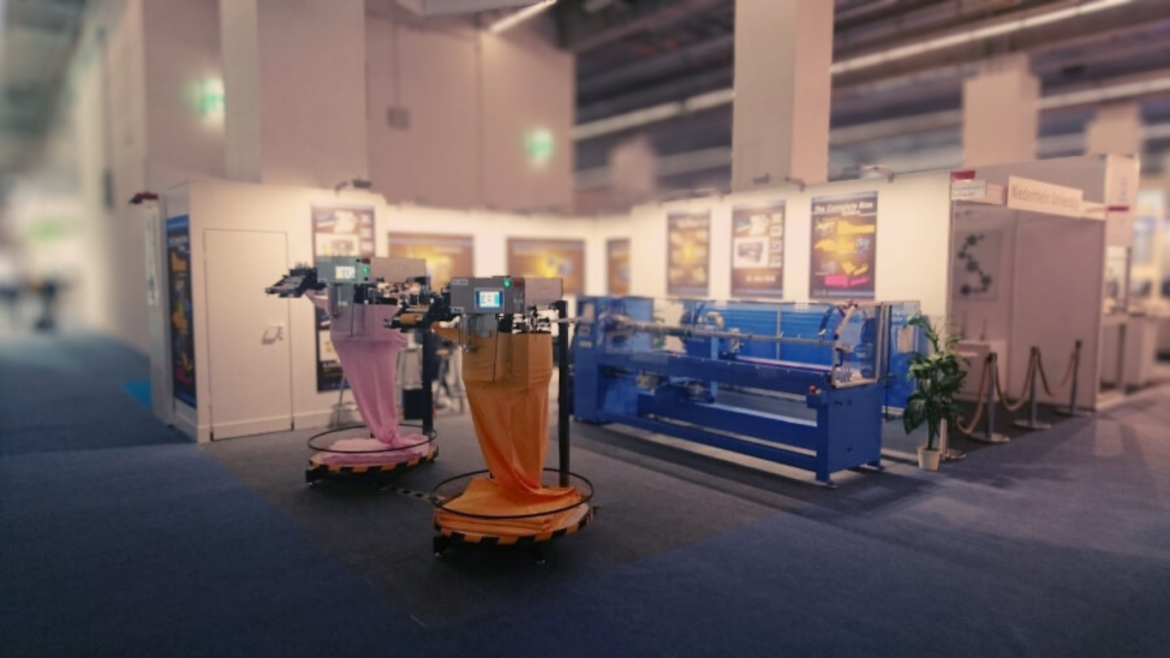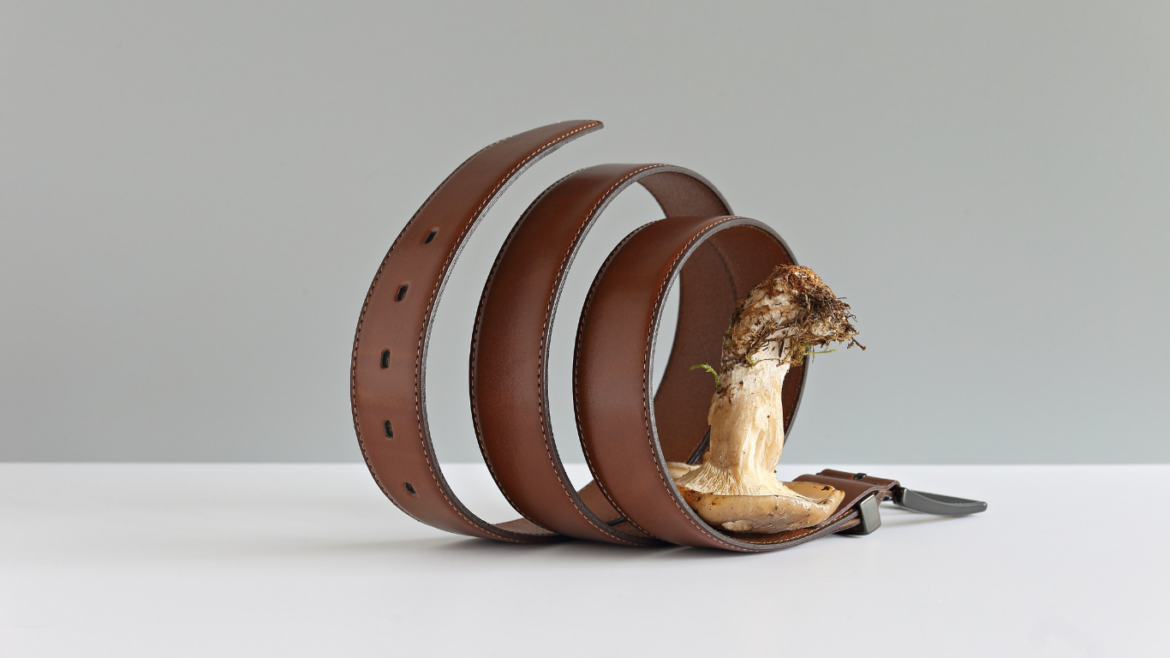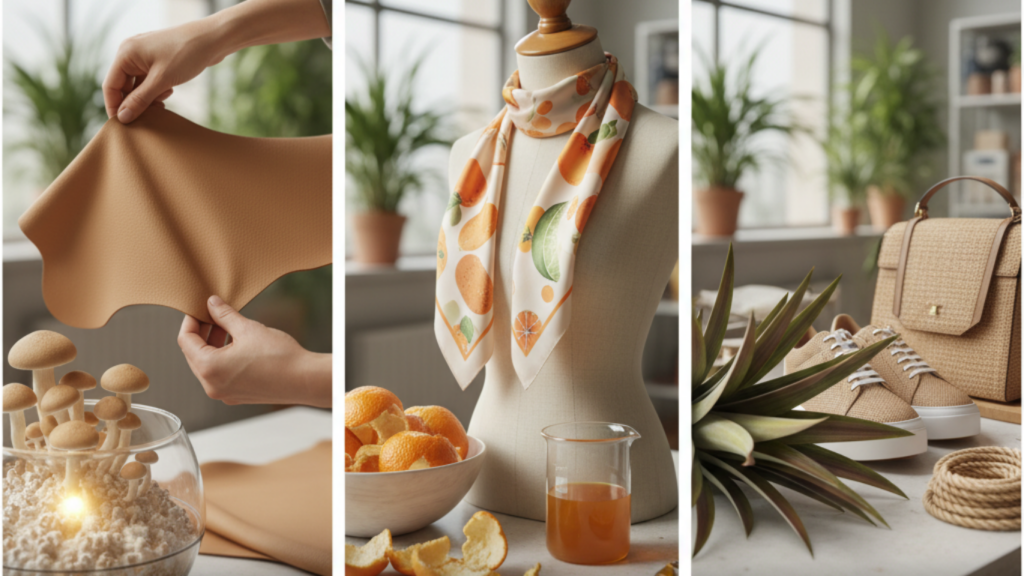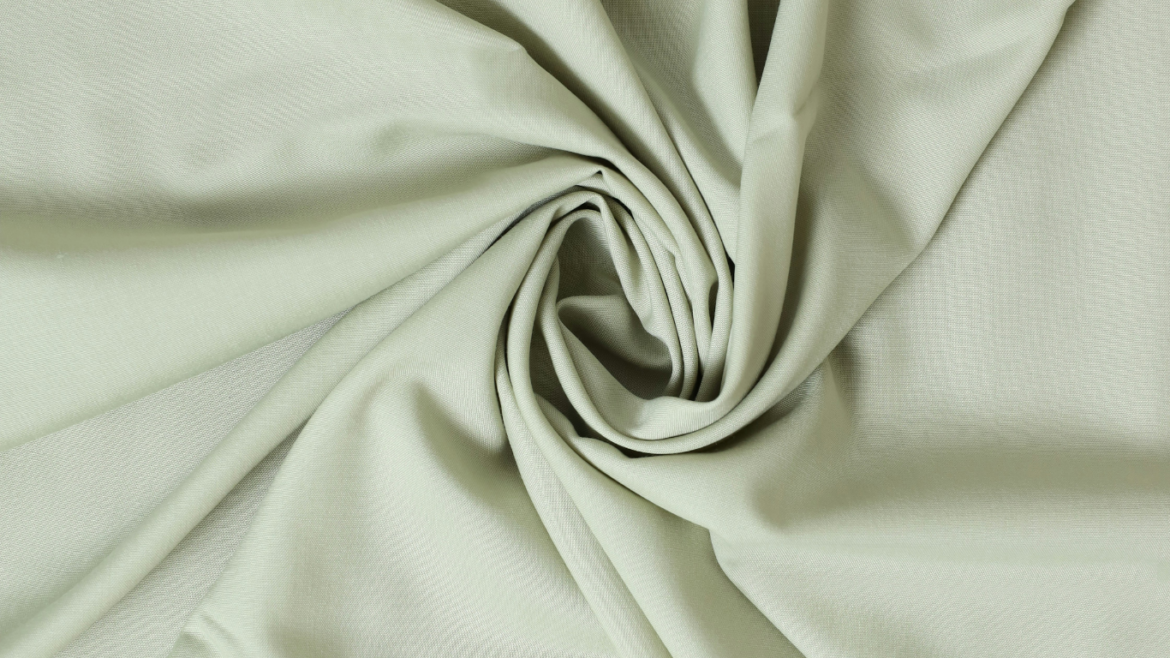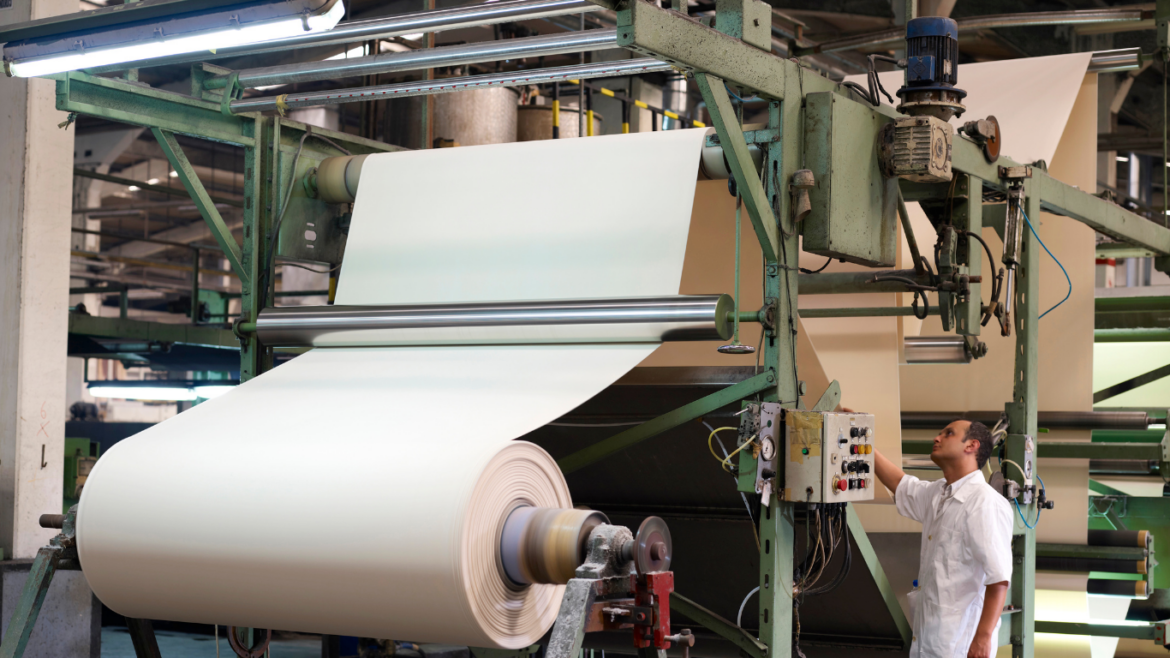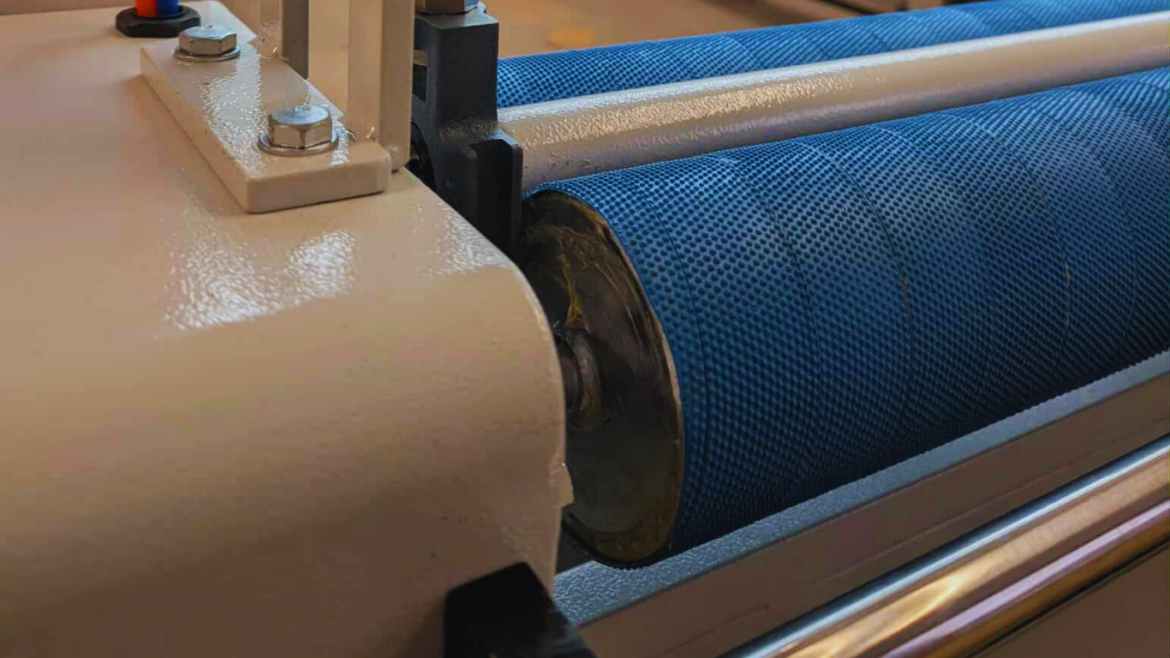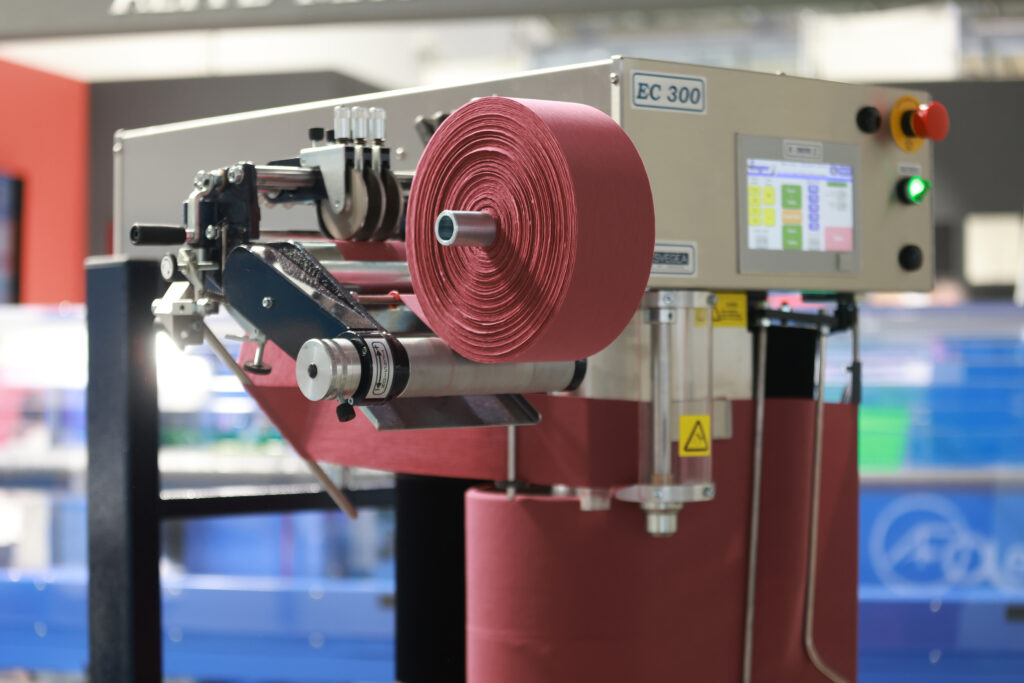In 2026, color is more than a design choice — it’s a cultural signal. From earthy neutrals that soothe the soul to hyper-synthetic hues that electrify digital spaces, the color trend in 2026 reflects a world in flux. Designers, manufacturers, and consumers alike are turning to color as a way to express emotion, identity, and innovation.
Earthy Neutrals: A Return to Grounding
After years of uncertainty, the global mood is shifting toward stability and introspection. This is clearly reflected in the rise of earthy tones — muted greens, soft browns, and calming blues. These hues evoke nature, wellness, and a slower pace of life.
According to WGSN and Coloro’s Spring/Summer 2026 forecast, Transformative Teal has been named Color of the Year. It symbolizes adaptability, healing, and balance — values that resonate deeply in a post-pandemic world.
Designers are using these tones to create garments that feel comforting yet elevated. From linen suits in moss green to knitwear in clay beige, the palette is both versatile and emotionally resonant.
Hyper-Synthetic Hues: Digital Expression Takes Over
While some seek calm, others crave stimulation. Enter the hyper-synthetic hues — electric fuchsia, jelly mint, neon orange — colors that scream for attention and thrive in digital environments.
Pantone’s Fashion Color Trend Report for Spring/Summer 2026 highlights this divergence. Their palette includes vibrant shades like Cyber Lime and Radiant Red, designed to unleash individual expression and challenge traditional aesthetics. See the full report at
These colors are especially popular among Gen Z and Gen Alpha, who use fashion as a form of digital identity. In virtual spaces, bold pigments stand out and communicate personality instantly. Expect to see these hues in streetwear, activewear, and digitally rendered fashion collections.
Color Psychology: Designing for Emotion
Color isn’t just visual — it’s psychological. In 2026, designers are leveraging color psychology to create emotional connections with consumers. Here’s how different tones are being used:
- Teals and blues: Promote calm, trust, and reflection
- Warm neutrals: Evoke comfort, nostalgia, and simplicity
- Bright synthetics: Signal energy, rebellion, and optimism
This emotional storytelling is influencing everything from fashion campaigns to retail environments. Consumers are drawn to colors that reflect their inner states, making color selection a strategic tool for brands.
Implications for Textile and Garment Manufacturers
The color trend in 2026 isn’t just a creative challenge — it’s a technical one. Producing consistent, high-quality hues across diverse materials requires precision and adaptability. This is where advanced textile machinery becomes essential.
For instance, automated strip cutting machines like the Svegea FA-500 are transforming how manufacturers handle color-sensitive fabrics. With its high-speed precision and programmable cutting capabilities, the FA-500 ensures consistent strip widths and clean edges — critical for maintaining color alignment and pattern integrity, especially when working with digitally dyed or gradient fabrics. This level of accuracy supports both aesthetic consistency and production efficiency, making it a valuable asset in color-driven textile workflows
As gradient dyeing and digital pigments become more popular, textile producers must also invest in equipment that supports innovative dyeing techniques while minimizing waste. Sustainability and efficiency are no longer optional — they’re expected.
Seasonless Palettes and Modular Design
Another key shift in 2026 is the rise of seasonless color palettes. Designers are moving away from rigid seasonal collections and embracing modular color systems that can be adapted year-round. This supports slower fashion cycles and encourages consumers to build versatile wardrobes.
WGSN emphasizes this shift toward “a year of redirection,” where color becomes a tool for expressing social equity, environmental awareness, and personal transformation.
For manufacturers, this means planning production around timeless hues and flexible colorways that can be reinterpreted across collections. It also opens the door for custom dyeing, limited editions, and on-demand color matching — all of which require agile production systems.
Digital Pigments and Virtual Fashion
As fashion increasingly intersects with technology, digital pigments are becoming a design frontier. These are colors created specifically for screens — iridescent, animated, and often impossible to replicate in physical form.
Virtual fashion platforms like DressX are pushing this boundary, offering garments that exist only in augmented reality. Designers are experimenting with color in ways that defy traditional constraints, creating immersive experiences that blend fashion with fantasy.
While this may seem futuristic, it’s already influencing physical fashion. Expect to see more garments inspired by digital aesthetics — holographic finishes, pixelated prints, and color-shifting fabrics — entering mainstream collections.
A Vibrant Reflection
The color trend in 2026 is a vibrant reflection of our cultural moment. It captures our desire for stability, our need for self-expression, and our fascination with technology. For designers, it’s an invitation to tell deeper stories. For manufacturers, it’s a challenge to innovate with precision and purpose.
If you’re a garment or textile manufacturer looking to align your production with the future of fashion, reach out to Håkan Steene at h.steene@svegea.se for a personalized demo of Svegea’s cutting-edge machinery.
The fashion world is entering a bold new era. As we approach 2026, designers, manufacturers, and consumers are embracing a dynamic blend of innovation, sustainability, and self-expression. From runway statements to textile breakthroughs, fashion trends for 2026 are redefining what it means to dress with purpose and personality.
Sustainability Takes Center Stage
One of the most dominant fashion trends in 2026 is sustainability. Eco-conscious design is no longer a niche — it’s the industry standard. Brands are shifting toward biodegradable fabrics, recycled fibers, and waterless dyeing techniques. According to the Ellen MacArthur Foundation, circular fashion models are gaining traction, encouraging reuse and regeneration across the supply chain.
This shift is also influencing textile production. Manufacturers are investing in machinery that minimizes waste and maximizes efficiency. For example, bias cutting machines enable precise fabric utilization, reducing offcuts and improving yield. These innovations support both environmental goals and economic performance.
Texture and Tactility: Feel Is the New Look
In 2026, fashion is all about how it feels. Designers are exploring tactile fabrics that evoke emotion and movement. Expect to see:
- Crinkled cottons and crushed velvets
- Oversized knits and layered tulle
- Liquid silks and structured neoprene
These textures demand precision in cutting and handling, especially in high-volume production. Advanced textile machinery plays a crucial role here. Advanced textile machinery offers the accuracy needed to handle delicate and complex materials without compromising quality.
Color Stories That Speak Louder
Color is becoming a language of its own. The 2026 palette includes earthy neutrals, hyper-synthetic brights, and gradient dye effects. Designers are using color to tell stories — from calm and grounded to bold and rebellious.
Pantone’s trend forecast highlights the emotional power of color in shaping consumer choices. This means manufacturers must be ready to work with diverse dye techniques and ensure consistency across batches — a challenge that modern machinery is helping solve.
Tech-Infused Fashion: Smart Meets Stylish
Technology is no longer behind the scenes. It’s woven into the very fabric of fashion. In 2026, we’re seeing garments with:
- Temperature-regulating fibers
- Embedded sensors for health tracking
- Responsive materials that change with movement or light
This evolution requires collaboration between fashion designers and textile engineers. It also demands equipment capable of handling new materials and production methods. Innovative textile machines are designed to adapt to these changes, offering flexibility and precision for cutting-edge textiles.
Inclusive Design and Adaptive Clothing
Inclusivity is a core value in fashion trends 2026. Brands are expanding size ranges, designing for diverse body types, and creating adaptive clothing for people with disabilities. Features include:
- Magnetic closures and easy-access openings
- Adjustable fits and sensory-friendly fabrics
- Modular garments that evolve with the wearer
This movement is not just ethical — it’s practical. As noted by the World Health Organization, over one billion people live with some form of disability. Fashion must serve them too.
Manufacturers are responding with smarter production lines and customizable cutting solutions. Svegea’s machines, known for their adaptability and precision, are helping garment producers meet these inclusive design goals efficiently.
Modular Fashion: One Garment, Many Lives
Modular design is gaining momentum. Consumers want clothing that adapts to different occasions, climates, and moods. Think detachable sleeves, reversible panels, and garments that transform from casual to formal.
This trend supports sustainability by reducing the need for multiple items. It also challenges manufacturers to rethink construction and cutting techniques. Bias cutting, in particular, allows for fluid draping and flexible design — essential for modular fashion.
Bold and Inclusive
Fashion trends for 2026 are bold, inclusive, and deeply connected to technology and sustainability. For garment and textile manufacturers, staying ahead means investing in tools that support these shifts — from eco-friendly materials to precision cutting equipment.
If you’re ready to upgrade your production capabilities and align with the future of fashion, reach out to Håkan Steene at h.steene@svegea.se for a personalized demo of Svegea’s cutting-edge machinery.
The fashion world is no longer just about the runway—it’s about revolution. Driven by environmental urgency and consumer demand, the industry must fundamentally transform the way garments are made. This isn’t just a trend; it’s a massive opportunity to build a better, cleaner, and more efficient future. Right at the foundation of this revolution are automated textile cutting machines. These aren’t just faster tools; they are the engines of precision, radically redefining the textile processing industry. For any forward-thinking garment or textile manufacturer, these systems are no longer optional—they are essential for meeting the demands of the modern, responsible market.
The Heartbreak of Manual Cutting: Waste, Inefficiency, and Lost Profit
Let’s face the harsh reality of traditional cutting: it’s messy, costly, and wildly inefficient. Manual processes inevitably lead to jagged edges, misaligned patterns, and an avalanche of unusable offcuts. This isn’t just frustrating—it’s a critical financial and environmental drain.
The numbers are staggering: The fashion industry dumps over 92 million tons of textile waste annually. Poorly executed first cuts simply waste too much material. Manufacturers throw literal profit into a landfill.
The antidote? The uncompromising accuracy of automated fabric cutting machines. These systems are programmed perfectionists. They use every millimetre of material, slashing error rates and transforming mountains of scrap into perfectly optimized components. The result is a leaner, greener, and far more profitable production line.
Where High-Speed Efficiency Meets Deep Environmental Commitment
Investing in automated fabric cutting machines isn’t about compromise; it’s about optimization. It proves that you don’t have to sacrifice speed for sustainability—you can have both.
Here’s the powerful equation:
- Unparalleled Precision: Say goodbye to waste! Automation cuts fabric wastage by up to 30%.
- Power Smart: Modern automated fabric cutting machines are energy-sippers, dramatically lowering your carbon footprint and operational utility costs.
- Speed Without Stress: Achieve lightning-fast throughput while maintaining pristine quality and consistency.
- Elevated Workforce: Free up your skilled workers from repetitive cutting tasks, allowing them to focus on high-value, complex challenges.
These advantages aren’t theoretical—they lead to immediate, quantifiable success: faster market delivery, rock-solid consistency, and simple compliance with global standards like ISO 14001.
Garment Cutting Machinery: Real-World Wins
The shift to automated fabric cutting machines is already creating global success stories:
- A major garment factory in Bangladesh reported a 25% reduction in fabric waste within months of their automation launch.
- A Portuguese knitwear specialist achieved a 40% increase in cutting speed while maintaining a flawless output record.
When global brands demand circular fashion models and net-zero strategies, the use of automated textile cutting machines is the non-negotiable step manufacturers must take. Investing in these solutions doesn’t just keep you current—it positions you as a leader setting the pace for the industry.
The Business Blueprint: Why You Can’t Afford Not to Automate
The business case for advanced fabric handling is irresistible:
-
- Financial Health: Less waste immediately equals lower spending on raw materials.
- Rapid ROI: Increased speed and reduced error rates translate directly into faster cash flow and profitability
- Brand Power: Sustainability is a competitive advantage. Showing commitment enhances your reputation with conscious consumers and key retail partners.
- Future-Proofing: Easily meet rigorous regulatory standards for waste and energy consumption.
In today’s cutthroat market, these efficiencies aren’t luxuries—they are the bedrock of lasting success.
Ready to Transform Your Production Line?
The future of fashion starts with a precise cut. If you are ready to stop calculating waste and start maximizing every yard of fabric, it’s time to explore the best technology available.
Svegea of Sweden offers precision-engineered automated fabric cutting machines trusted globally for their uncompromising reliability, durability, and eco-conscious design.
Take the next step: Contact Håkan Steene at h.steene@svegea.se to schedule a personalized product demo and discover how Svegea can immediately elevate your textile operations.
The ITMA ASIA + CITME exhibition in Singapore wasn’t just another industry event—it was a heartbeat moment for the textile world. For us at Svegea of Sweden, it was a chance to stand shoulder-to-shoulder with visionaries, innovators, and changemakers who believe that textile manufacturing can—and must—be a force for good
With over 840 exhibitors and thousands of passionate attendees, the energy was electric. The conversations weren’t just about machines; they were about meaning. About how we, as a global community, can drive sustainability, embrace digital transformation, and build a supply chain that respects both people and planet.
At our booth, we weren’t just presenting technology—we were planting seeds for a better future.
Empowering Asia’s Green Transition
Singapore was the perfect stage for a pivotal shift. By bringing Swedish innovation closer to the dynamic markets of South and Southeast Asia, we’re helping manufacturers leap forward—not just in productivity, but in purpose.
We’re not here to sell machines. We’re here to build partnerships. To guide manufacturers through the maze of global regulations, ethical standards, and environmental goals. The conversations I had were rich with urgency and optimism—focused on resource efficiency, circularity, and renewable integration. Svegea’s solutions aren’t just engineered for performance; they’re designed to empower transformation.
Global Connection, Shared Values
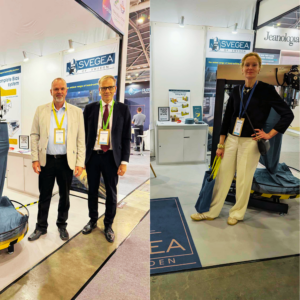 One of the most inspiring moments was welcoming Anders Sjoberg, Swedish Ambassador to Singapore, to our booth. His presence was more than symbolic—it was a powerful endorsement of Sweden’s leadership in ethical innovation and sustainable industry.
One of the most inspiring moments was welcoming Anders Sjoberg, Swedish Ambassador to Singapore, to our booth. His presence was more than symbolic—it was a powerful endorsement of Sweden’s leadership in ethical innovation and sustainable industry.
We were also honored to host Therese Premler-Andersson, General Secretary of TMAS. Her visit reminded us that collaboration is the cornerstone of progress. No single company can solve the textile industry’s challenges alone. But together—through shared knowledge, mutual respect, and bold action—we can reshape the future of fashion and manufacturing.
Beyond the Sale: A Promise to the Future
As we dismantled our booth, what lingered wasn’t the hum of machinery—it was the spirit of possibility. ITMA ASIA + CITME reaffirmed our belief that innovation and ethics must walk hand in hand. The focus wasn’t on quantity—it was on quality, impact, and intention.
These four days have galvanized our mission. We will continue to develop durable, high-performance technologies that enable manufacturers to produce exceptional garments while protecting our planet. The journey doesn’t end here—it begins anew, with deeper partnerships and bolder goals.
Tack för stödet (Thank you for the support). If you’re ready to elevate your sustainable production, I invite you to connect with our team leader, Håkan Steene, for a hands-on demonstration of the EC COLLARETTE 200 and EC 50: h.steene@svegea.se.
Let’s build the future—together.
In today’s fast-paced textile industry, precision, speed, and sustainability are no longer optional — they’re essential. That’s why manufacturers around the world are turning to Swedish textile cutting machinery — specifically Svegea, a company that’s been redefining automated cutting solutions since 1952.
Svegea’s Swedish-engineered solutions help manufacturers by focusing on automation, sustainability, and user-friendly design to improve efficiency, reduce waste, and adapt to market demands. Their machines support the creation of smarter, more connected factories through integration with Industry 4.0 principles, making them ideal partners for reshoring efforts and sustainable production goals.
Automation: The Foundation of Competitive Manufacturing
High-Speed Precision Cutting
Svegea’s textile cutting machinery from Sweden is engineered for high-speed, precise cutting, which helps produce consistent quality and faster production times. Every machine is designed to maintain exacting standards even at maximum operational speeds, ensuring that manufacturers can scale production without sacrificing quality.
- EC-450XF Collarette Cutting System: Awarded at Texprocess 2023 for its innovation and sustainability, this fully automatic system delivers high-speed, low-waste performance with precision that’s become the industry benchmark.
- Euro-Collarette Fully Automatic Series: These models feature the intuitive E Drive 2 panel and two-step cutting for multiple bands — ideal for high-volume operations requiring consistent output.
Automated Processes That Reduce Labor Dependency
Svegea integrates automatic tube sewing units for creating sewn tubes in rolled or flat-folded forms, reducing the need for operator assistance and minimizing human error.
- TSU 200 A/AF Tube Sewing Unit: Minimal operator input, maximum efficiency. This system exemplifies how automation enables manufacturers to redirect skilled labor to higher-value tasks.
- Bias Cutter / Winder 200: Smooth unwinding and rewinding into single ply rolls with minimal manual intervention.
- Bias Cutter CMB 1800: Versatile and adaptable across fabric types, streamlining the entire bias binding process.
Supporting Reshoring with Smart Automation
Automation facilitates reshoring operations by making local manufacturing more competitive and efficient. Sweden’s textile cutting machinery industry leads this transformation, offering manufacturers the tools they need to bring production home without sacrificing cost-effectiveness.
Sustainability: Engineering for a Better Future
Precision That Reduces Waste
Precision cutting and automation help maximize fabric usage, minimizing material waste. Svegea’s machines are engineered to optimize every centimeter of fabric, contributing directly to both profitability and environmental responsibility.
- Strip Cutter CMS 1800A2: High-speed cutting for bias tape, trims, and bindings with advanced nesting algorithms that reduce offcut waste.
- TSO 380 G/GF Tubular Knit Slitter: Reduces waste and improves material yield through intelligent cutting patterns.
Energy-Efficient Engineering
Svegea’s machinery is designed to be energy efficient, lowering consumption and environmental impact. Every system is optimized for minimal power draw without compromising performance, making textile cutting machinery from Sweden a smart choice for manufacturers committed to reducing their carbon footprint.
- RRS-800 Fully Automatic Roll Slitting Machine: Offers motorized knife control and adjustable speed for consistent quality while maintaining low energy consumption throughout extended production runs.
Supporting Circular Economy and Recycled Materials
By improving garment durability and promoting longevity through efficient production, Svegea’s machines contribute to a more circular economy. The advanced technology can support the use of recycled materials in production, accommodating the varied characteristics of reclaimed fabrics without compromising cut quality.
- FIM CMI 210 R / ZR Fabric Inspection Machine: Detects defects and inconsistencies in both virgin and recycled materials before they reach the cutting floor, ensuring quality regardless of source.
User-Friendly Design: Versatility Meets Accessibility
Adaptable Across Material Types
The cutting machines can handle a wide range of materials, from delicate silks to heavy-duty industrial textiles. This versatility makes Swedish textile cutting machinery ideal for manufacturers serving diverse market segments.
- SV/BK Band Knife Series: Precision cutting for everything from delicate silks to heavy-duty fabrics, with easily adjustable settings for quick material transitions.
- Strip Cutter FA 500: Heavy-duty and reliable, perfect for long production cycles with materials ranging from PVC to non-woven fabrics.
Quick Changeovers for Maximum Productivity
User-friendly interfaces and the ability to quickly switch between patterns and materials reduce downtime and enhance productivity. The intuitive E Drive 2 control panel makes complex operations accessible to operators at all skill levels.
- Euro-Collarette Semi-Automatic Series: A semi-automatic option that cuts two bands simultaneously, with widths ranging from 16 to 140 mm — changeable in minutes, not hours.
Customization for Niche Applications
Svegea provides custom-specific machines and units for niche applications like bias cutting, and can adapt to diverse customer preferences. This flexibility ensures that whether you’re producing standard collarettes or specialized technical textiles, there’s a solution engineered specifically for your needs.
- W 2100S Fabric Rewinding Machine: Perfect re-rolls every time, with customizable tension and speed settings for different fabric types.
Industry 4.0 Integration: Building Smarter Factories
Sweden’s textile cutting machinery leads the way in smart manufacturing integration. Designed to connect seamlessly with modern factory management software the Svegea system enables:
- Real-time production monitoring and quality control
- Predictive maintenance scheduling to minimize downtime
- Data-driven optimization of cutting patterns and material usage
- Integration with inventory and supply chain management systems
This connectivity transforms individual machines into components of an intelligent manufacturing ecosystem. The result? Long-term competitiveness in an increasingly digital industry.
The Swedish Advantage: Seven Decades of Innovation
Textile cutting machinery from Sweden represents more than a geographic label — it’s a commitment to quality, innovation, and sustainability. Svegea embodies the best of Swedish engineering: meticulous attention to detail, long-term reliability, and environmental responsibility.
Svegea has been serving global textile manufacturers since 1952, continuously innovating to meet the evolving demands of modern production. This heritage of excellence makes Swedish textile cutting machinery a global benchmark for quality, sustainability, and technological advancement.
Ready to Transform Your Production Line?
Experience how premium Swedish textile cutting machinery can revolutionize your operations. Whether you’re looking to reshore production, reduce waste, improve efficiency, or build an Industry 4.0-ready factory, Svegea has the solutions you need.
Explore Svegea’s full range of automated textile solutions at svegea.se. For a personalized product demo and consultation, contact Håkan Steene at h.steene@svegea.se.
Let’s build the future of sustainable, efficient textile manufacturing — together.
The fashion revolution isn’t just a trend—it’s a full-blown transformation. It’s bold, it’s beautiful, and it’s reshaping everything from haute couture to humble factory floors. Circular fashion, once a niche concept whispered among eco-warriors, is now the heartbeat of the industry. And guess what? It’s not just designers and influencers leading the charge. Garment and textile manufacturers are stepping into the spotlight, armed with smart machines and sustainable strategies.
Circular Fashion: More Than Just a Buzzword
Let’s be real. Fashion has always been about reinvention. But the fashion revolution is different. It’s not about chasing the next look; it’s about changing the way we make, wear, and reuse clothing. Circular fashion means designing garments that last longer, can be repaired, recycled, or repurposed, and don’t end up as landfill clutter.
Consumers are loving it. From thrifted treasures to biodegradable sneakers, they’re choosing pieces that tell a story—and respect the planet. But behind every conscious choice is a manufacturer making it possible.
The Factory Floor Joins the Revolution
Here’s where things get exciting. The fashion revolution isn’t just happening on runways or in retail. It’s happening in factories, where smart technology is turning sustainability into profitability.
Modern fabric inspection systems now detect flaws before cutting begins, reducing waste and improving quality. Automated cutting machines use AI to map out the most efficient layouts, saving material and time. These innovations aren’t just cool—they’re crucial.
According to the Stockholm Resilience Centre, circular fashion models are key to reducing environmental impact and building resilient supply chains. And manufacturers who embrace these models are seeing real results.
Fashion Revolution = ROI Revolution
Let’s talk numbers. The fashion revolution isn’t just good for the Earth—it’s good for business.
By optimizing material use with smart inspection and cutting tech, manufacturers reduce fabric waste, lower production costs, and increase output. That means better margins and faster turnaround. Plus, sustainable practices attract eco-conscious brands and consumers, boosting demand and loyalty.
A study published by MDPI found that circular economy strategies like reuse, recycling, and reduction are not only environmentally beneficial—they’re economically viable. In other words, sustainability sells.
From Catwalk to Cutting Table
Designers may sketch the vision, but manufacturers bring it to life. The fashion revolution depends on this partnership.
Imagine a designer creating a zero-waste collection. To make it real, the factory needs machines that can handle unconventional fabrics, cut with precision, and minimize leftovers. That’s where innovation meets execution.
Why Manufacturers Should Care
Still wondering if the fashion revolution is worth the investment? Let’s break it down:
- Relevance: Brands are demanding sustainable production. If you can’t deliver, they’ll find someone who can.
- Efficiency: Smart machines reduce waste, save time, and improve consistency.
- Compliance: Regulations around textile waste are tightening. Circular practices help you stay compliant.
- Growth: Eco-conscious consumers are driving demand. Be ready to scale sustainably.
This isn’t just a movement—it’s a market shift. And manufacturers who adapt will thrive.
The Future Is Circular—and Smart
Circular fashion is here to stay. And the fashion revolution is only getting stronger. From recycled fibers to AI-powered cutting tables, the tools are ready. The demand is real. And the opportunity is massive.
If you’re a garment or textile manufacturer, now is the time to act. Don’t just watch the revolution—join it.
“The fashion revolution is not just about what we wear—it’s about how we make it. At Svegea, we’re committed to helping garment and textile manufacturers stay ahead by innovating our machinery to support circular fashion models. Sustainability and profitability can go hand in hand.” — Hakan Steene, Managing Director, Svegea of Sweden
Contact Hakan Steene at h.steene@svegea.se to explore Svegea’s innovative textile machinery. These sustainable solutions are designed to help your company stay relevant, reduce waste, and boost ROI in the age of the fashion revolution.
Fashion is changing—and fast. Today, being eco-friendly isn’t just a trend. It’s a smart move. People care more about the planet, and they want clothes made responsibly. That’s where fabric innovation comes in. It’s helping fashion brands create better materials and use smarter machines to make clothes in cleaner ways.
Let’s explore how new fabrics and modern machines are working together to build a more sustainable fashion industry.
New Materials, New Possibilities
For years, most clothes were made from cotton or polyester. These materials use a lot of water, chemicals, and energy. But now, designers are using things like fruit peels, mushrooms, and even carbon from the air to make fabric.
Here are a few examples:
- Mylo: A soft, leather-like material made from mushroom roots. It feels like real leather but is biodegradable and doesn’t harm animals.
- Orange Fiber: Made from leftover citrus peels. It’s silky and smooth, perfect for dresses and scarves.
- Piñatex: Created from pineapple leaves. It’s strong and flexible, often used in shoes and bags.
These new fabrics are stylish, durable, and better for the environment. They break down naturally and don’t need as many resources to produce. People want to know where their clothes come from, and brands are responding with cleaner, smarter choices.
Machines That Make It Happen
These cool new fabrics wouldn’t exist without the right machines. Today’s textile machines are smarter and greener than ever. They use less water, less energy, and fewer chemicals.
Let’s break down what these machines do:
- Dyeing machines with closed-loop systems: These machines clean and reuse water during the dyeing process. That means less pollution and lower water bills.
- Spinning machines with smart sensors: These sensors adjust the yarn tension automatically. This helps reduce waste and keeps the fabric smooth and strong.
- Aluminum extrusion frames: These lightweight frames make machines faster and easier to maintain. They also use less energy during production.
This is where fabric innovation meets smart engineering. By using better materials and better machines, factories can make high-quality clothes while protecting the planet.
Why Going Green Is Good for Business
Being sustainable isn’t just good for the Earth—it’s good for business too. Brands that use fabric innovation often save money and attract more customers.
Here’s how:
- Lower energy costs: Machines that use less electricity help reduce monthly bills.
- Fewer labor expenses: Automated systems do more work with fewer people, saving time and money.
- Longer-lasting products: Strong, recyclable fabrics mean fewer returns and happier customers.
Also, governments are starting to set stricter rules about waste and pollution. Companies that switch to cleaner methods now will be ready for the future—and avoid fines or delays.
Recycling Clothes: The Circular Fashion Idea
One of the coolest parts of fabric innovation is how it helps with recycling. Instead of throwing old clothes away, companies can now turn them into new fabric.
Here are some exciting developments:
- Fiber-to-fiber recycling: This process breaks down old clothes and spins them into fresh yarn. It keeps materials in use and out of landfills.
- Carbon capture polyester: Some companies are turning carbon dioxide from factory smoke into polyester fabric. It’s a smart way to clean the air and make clothes.
- Lab-grown cotton: Scientists are growing cotton in labs without using farmland or pesticides. It’s clean, safe, and doesn’t harm the soil.
These ideas are already being tested in places like Europe and Asia. They help reduce trash, save resources, and even create new jobs.
Working Together to Make It Work
To make all this happen, people across the fashion world need to team up. Garment manufacturers, fabric developers, and clothing brands must share ideas and work together.
Here’s what that looks like:
- Engineers designing new machines: These machines can handle unusual fabrics like mushroom leather or pineapple fiber.
- Designers experimenting with new styles: They’re testing how these new materials feel, look, and move.
- Factory owners rethinking production: They’re changing how they plan, cut, and ship products to reduce waste and save money.
This teamwork is what makes fabric innovation so powerful. It’s not just about one product—it’s about changing the whole system.
Fashion Innovation is Growing Every Day
If you’re a garment maker, designer, or business owner, this is your moment. The tools are ready. The materials are here. And the demand for sustainable fashion is growing every day.
“At Svegea, we believe fabric innovation is the heartbeat of modern fashion. That’s why we’re constantly evolving our machinery—making it smarter, cleaner, and more adaptable—so garment and textile manufacturers can stay ahead in a fast-changing industry.” — Hakan Steene, Managing Director of Svegea of Sweden
Reach out to Hakan Steene at h.steene@svegea.se to explore how Svegea’s textile machinery can help you lead the way. Whether you’re upgrading your factory or starting fresh, Svegea offers smart solutions that fit your goals—and your budget.
Fabric shrinkage is one of the most overlooked challenges in garment manufacturing. It can lead to misaligned patterns, wasted material, and inconsistent sizing. If you want to prevent fabric shrinkage before cutting, you need to understand what causes it and how to control it.
Let’s explore practical ways to reduce shrinkage and improve cutting accuracy — without adding complexity to your workflow.
Why Does Fabric Shrink?
Shrinkage happens when fibers contract due to heat, moisture, or mechanical stress. Natural fabrics like cotton, rayon, and linen are especially prone to this. Even synthetic blends can shrink slightly under certain conditions.
When fabric is cut before it stabilizes, the final garment may twist, pucker, or lose its intended shape. That’s why it’s essential to prevent fabric shrinkage before cutting — not after.
Pre-Shrinking vs. Relaxing: What’s the Difference?
Pre-shrinking involves washing or steaming the fabric before cutting. While this method works, it’s often inconsistent and time-consuming. Relaxing, on the other hand, allows the fabric to settle naturally. It reduces internal tension caused by rolling, folding, or transport.
For knitwear and stretch fabrics, relaxing is especially effective. It helps prevent fabric shrinkage before cutting by allowing fibers to return to their natural state.
5 Proven Ways to Prevent Fabric Shrinkage Before Cutting
1. Use a Fabric Relaxing Machine
A fabric relaxing machine gently unwinds and settles the fabric. It reduces tension and helps stabilize the material. This is one of the most reliable ways to prevent fabric shrinkage before cutting in high-volume production.
2. Control Room Conditions
Humidity and temperature affect fiber behavior. Keep your cutting room at a consistent humidity level (around 60–70%) and avoid sudden temperature changes.
3. Let Fabric Rest
If you don’t have a relaxing machine, lay the fabric flat and let it rest for 12–24 hours. This passive method still helps reduce shrinkage and curling.
4. Test Shrinkage Rates
Before bulk cutting, test a small swatch. Wash or steam it, then measure the change. This helps you adjust your cutting patterns and prevent shrinkage before cutting large batches.
5. Avoid Immediate Cutting
Fabric fresh off the roll is often under tension. Give it time to settle before cutting to avoid distortion and waste.
Why It Matters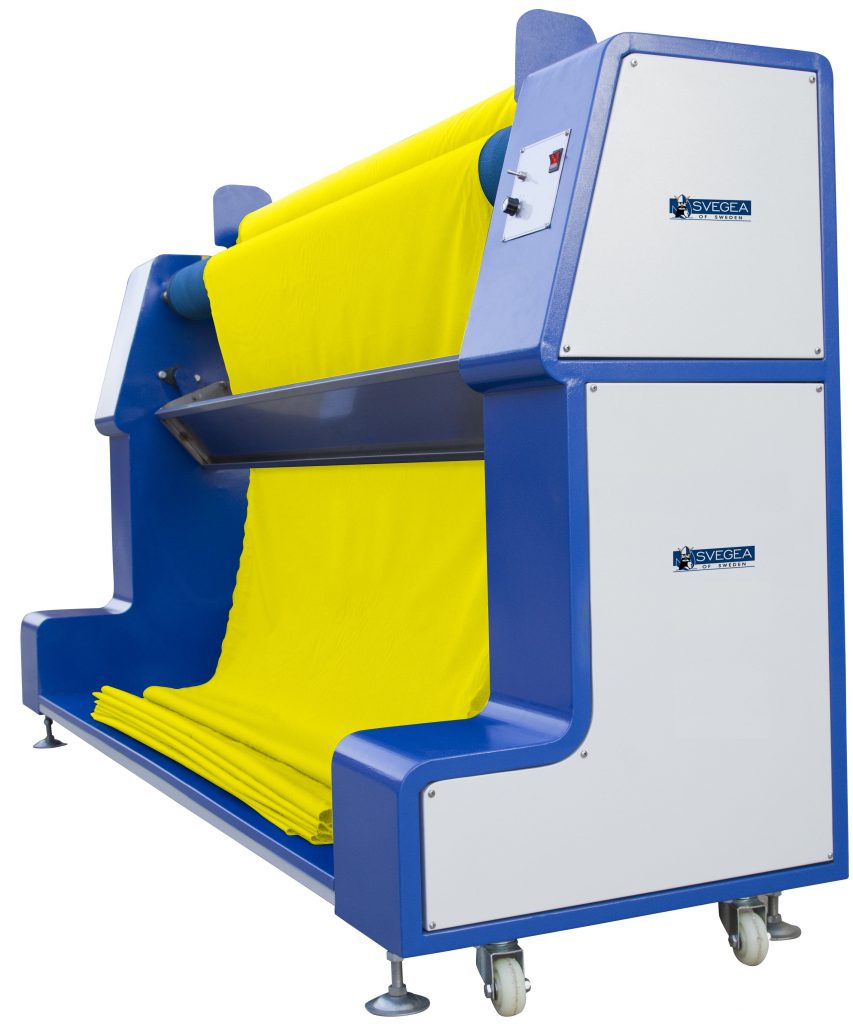
Controlling fabric shrinkage before cutting is essential for consistent garment quality. Shrinkage can distort patterns, misalign seams, and lead to costly rework. By stabilizing fabric early—through relaxing, resting, or testing—you reduce waste and improve production accuracy. This not only protects your materials but also strengthens your brand’s reliability. Manufacturers who take shrinkage seriously deliver better-fitting garments and fewer returns. In a competitive market, precision matters. Starting with properly prepared fabric sets the tone for everything that follows.
Integrating Fabric Relaxing System
Want to improve cutting accuracy and reduce waste? Start by integrating fabric relaxing into your workflow. Whether through manual rest periods or automated systems, the results will speak for themselves.
Many manufacturers now rely on purpose-built equipment like fabric relaxing machines to stabilize material before cutting. These systems gently release tension in the fabric, helping reduce shrinkage and distortion. One example is the CR-210 Fabric Relaxing Machine, which is designed to support high-volume production environments where consistency is key.
By making fabric relaxation a standard part of your process, you set the stage for cleaner cuts, better fit, and fewer production errors.
For a product demo or expert guidance, email Håkan Steene at h.steene@svegea.se
Garment factories across India, Bangladesh, Vietnam, and South America are facing a new reality. Global demand is rising, lead times are shrinking, and buyers expect consistent quality at competitive prices. To stay ahead, manufacturers must rethink how they produce — and that starts with smarter machines.
One of the most effective ways to improve efficiency is by investing in intelligent textile machines for apparel production. These machines don’t just automate tasks. They optimize them. From slitting tubular knits to cutting collarettes, intelligent systems help reduce waste, speed up output, and increase return on investment.
The Hidden Cost of Manual Processing
Many factories still rely on manual or semi-automated systems for fabric preparation. While this may seem cost-effective at first, it often leads to:
- Uneven cuts and inconsistent sizing
- Higher fabric waste
- Slower production cycles
- Increased labor fatigue and errors
These issues add up. Over time, they affect profitability, delivery timelines, and customer satisfaction.
Smarter Machines, Better Results
Intelligent textile machines for apparel production solve these problems with precision and consistency. They’re designed to handle high volumes with minimal supervision, making them ideal for export-driven factories and fast fashion suppliers.
Take the Svegea TSO 380 Tubular Knit Slitter, for example. This machine is built for speed and accuracy. It slits tubular knitted fabrics open with clean edges, ready for further processing. It’s easy to operate, requires minimal maintenance, and integrates smoothly into existing production lines.
Efficiency That Pays Off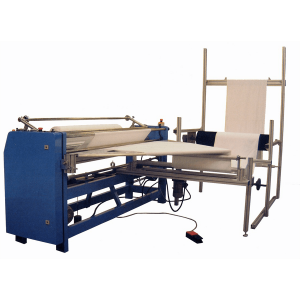
Factories using machines like the TSO 380 report:
- Up to 15% reduction in fabric waste
- Faster turnaround times
- Fewer production errors
- Lower labor costs
These improvements lead to measurable ROI — often within the first year of installation. That’s why more manufacturers are turning to intelligent textile machines for apparel production as a long-term strategy.
Flexibility and Integration
Modern apparel production demands flexibility. Machines must adapt to different fabric types, styles, and order volumes. The best systems are designed to handle knits, wovens, and technical textiles without constant retooling.
Svegea’s machines are known for their versatility. Whether you’re processing tubular knits or cutting narrow strips, their equipment delivers consistent results across a wide range of materials.
Reliability You Can Count On
Downtime is expensive. That’s why reliability matters. Manufacturers need machines that run smoothly, require minimal maintenance, and come with strong technical support.
Svegea of Sweden has built its reputation on engineering excellence and long-term durability. High-volume factories around the world — including across Asia and Latin America — rely on the intelligent textile machinery backed by responsive teams for support.
Investing in Smart Solutions
The future of garment manufacturing belongs to those who invest in smart, scalable solutions. By integrating intelligent textile machines for apparel production, factories can boost efficiency, reduce waste, and stay competitive in a fast-moving global market.
If you’re ready to upgrade your production line, explore Svegea’s TSO 380 Tubular Knit Slitter and other solutions at www.svegea.se.
For a product demo, email Håkan Steene at h.steene@svegea.se
Factories face three hard truths: fabric costs keep rising, buyers want faster delivery, and sustainability matters to customers and regulators. Improving garment manufacturing efficiency puts these pressures into practical order. Get this right and you cut costs, gain speed, and reduce waste.
Where waste really bites
Small mistakes cost big. A mis-inspected roll can mean meters of unusable fabric. Manual checks slow lines and create rework. Labor shortages and rising wages exacerbate every inefficiency. That is why garment manufacturing efficiency must be a daily focus, not a quarterly idea.
Trends pushing factories to change
Across the industry, manufacturers are adopting digital tools. Marker optimization reduces raw material use. Real-time dashboards track defects. Automation speeds repetitive tasks while freeing people to solve problems. Together, these moves enhance garment manufacturing efficiency and make factories more scalable.
Tools that move the needle
Automation is not a single gadget. It is a set of targeted investments that deliver repeatable gains. Start with quality control. Automated inspection and reliable cutting reduce rework and scraps. Next, connect systems so design files, markers, and production data flow without manual transfers. That reduces setup time and avoids costly mistakes. Focused improvements add up fast when your goal is garment manufacturing efficiency.
Fabric inspection: the unsung hero
A lot of manufacturers undervalue inspection. A good inspection line catches faults before cutting, preventing defects that would otherwise propagate through sewing and finishing. The CMI 210 ZR fabric inspection machine is built for that exact role. It handles rolls up to 2100 mm, runs roll-to-roll or roll-to-flat, and offers variable electronically controlled speed, photocell edge alignment, and electronic tension adjustments. That level of control reduces hidden waste at the source.
Collarette cutting: precision where it matters
Certain parts of a garment reveal flaws instantly. Collarette and binding components need uniform width and clean edges. Svegea’s collarette cutting machines cover semi-automatic and fully automatic models. They handle tubular knitted fabric with adjustable widths from about 16 to 140 mm. The standard setup cuts two bands at once, and knife units can be added for more. For high-volume runs, the automatic systems remove variability and keep quality consistent.
What success looks like in real numbers
When factories prioritize process control and the right equipment, they see measurable results. Expect fabric waste to drop, lead times to shorten, and quality rejects to decline. These improvements drive margin expansion and help with sustainability reporting. In short, garment manufacturing efficiency converts directly into competitive advantage.
A simple plan to get started
Start methodically. First, audit the cutting and inspection rooms to find where most scrap and rework come from. Next, pilot one change. Try a fabric inspection line or a semi-automatic collarette cutter on a single product style or order run. Train the operators, collect data, and tweak. Finally, scale what proves out. This stepwise approach helps you manage cost and avoid disruption.
The business case
The math usually lands in your favor. Less waste means lower material spend. Tighter quality control means fewer returns and less rework. Faster setup times mean you can run smaller batches and respond to demand. That combination raises throughput without endless headcount increases. If you want to improve garment manufacturing efficiency, this is the route most executives choose.
Focusing on the right tools
Efficiency is not glamorous, but it is decisive. Focus on the right mix of inspection, precise cutting, and connected workflows, and you will see both cost and time benefits. Machines that support those goals, whether a robust inspection unit like the CMI 210 ZR or a scalable Euro-Collarette cutter, are tools that turn good intentions into measurable results.
For a demo or to discuss how this fits your production, contact Håkan Steene at h.steene@svegea.se or visit the Svegea product pages.



